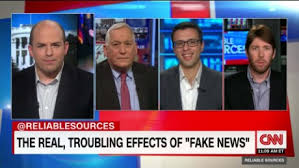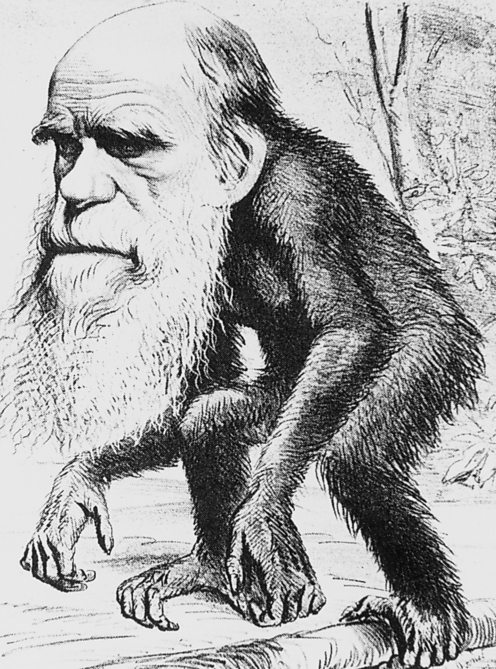People want to believe anything they see on an article about a public figure they like or dislike. It could be very misleading and could negatively effect the way the public figure is portrayed in the public eye. The author, or journalist who writes these “fake news” articles can be cogent to the viewers. “Edgar Maddison Welch told police he had traveled from his home in Salisbury, N.C. to the nation’s capital to investigate a pre-election conspiracy theory, wherein Democratic presidential nominee Hillary Clinton allegedly led a child-trafficking ring out of Comet Ping Pong.” An example of fake news is the “Pizza Gate”, where people actually believed that Hillary Clinton led child-trafficking ring out of a pizzeria in Washington. The fake news incited North Carolina resident, Edgar Maddison Welch to travel to D.C with a gun to investigate Comet Ping Pong. This incident proves that fake news articles provoke people to act unethical and hostile. Another example of fake news is, “Fake news: Thousands of people at a Donald Trump rally in Manhattan chanted, “We hate Muslims, we hate blacks, we want our great country back.” Fake news articles like this can incite people and make people turbid about what actually happened at the rally. Most people who believe that Trump supporters are racist would believe that the chants they made were actually true.
“False stories on National Report like “Texas Town Quarantined After Family Of Five Test Positive For The Ebola Virus” …. But the Texas story, which lacks a disclaimer in the body of the text that clearly identifies it as satire, was shared more than 330,000 times on Facebook according to Muck Rack’s Who Shared algorithm.” This false story about how a family was quarantined for supposedly testing positive for Ebola, was shared almost half a million times. People in the U.S. are already perturbed by the Ebola virus possibly being in the country, and this fake news article is cogent to people who fear that the virus could spread across the nation. “Creators of fake news found that they could capture so much interest that they could make money off fake news through automated advertising that rewards high traffic to their sites. A man running a string of fake news sites from the Los Angeles suburbs told NPR he made between $10,000 and $30,000 a month.” Creators of fake news articles don’t care about spreading fake news to the public, as long as they get paid well. Another example of how many people view fake news articles, “With Donald Trump behind in the polls in early fall, Harris sat down at the kitchen table in his apartment and created a fake story that was eventually shared with 6 million people. BREAKING: ‘Tens of thousands’ of fraudulent Clinton votes found in Ohio warehouse,” according to The New York Times, which broke the story on Wednesday about what Harris had done.” Harris, a Davidson College graduate decided to create a fake story about how Hillary Clinton used fake votes to help her in the polls. The article was shared by 6 million people, claiming that Clinton used thousands of fraudulent votes. Harris knew that Donald Trump was falling behind in the poles, and people already suspect that Hillary Clinton would cheat, so with great celerity, Harris decided to help Trump by posting this fake story.
The article about “Pizza Gate” a fake news story about how former democratic presidential nominee, Hillary Clinton made me feel turbulent. A child-trafficking ring out of a pizzeria, doesn’t make any sense. It incited one man to travel over 5 hours, equipped with an AR-15 to “investigate.” The point is, is that people need to know the truth and it is exigent for people to only listen to the facts, not something that looks “legit”.
Video: Politifact Lie of The Year: Fake News


2016 Lie of the Year: Fake news – Angie Drobnic Holan
The very real consequences of fake news stories and why your brain can’t ignore them – Nsikan Akpan
Fake news author is fired; apologizes to those ‘disappointed’ by his actions – Joe Marusak


 14 was the beginning of birds’ mating season, which added to the idea that the middle of Valentine’s Day should be a day for romance.” It became a day where loved ones show the love they have for another through flowers, chocolates and gifts. What people might not know about Valentine’s Day is that 1 billion cards are exchanged each year, making the holiday the second most popular card-sending holiday behind Christmas. Valentine’s Day has become a controversial holiday over the years because, some may think it’s an excuse to get something nice for their loved ones. When in reality, we should be gifting and showing our appreciation on any or every day. For some people the thought of showing love occasionally can be recondite and hard to aggregate. The thought of spreading love can seem egregious to people who’ve never been given the gift of love.
14 was the beginning of birds’ mating season, which added to the idea that the middle of Valentine’s Day should be a day for romance.” It became a day where loved ones show the love they have for another through flowers, chocolates and gifts. What people might not know about Valentine’s Day is that 1 billion cards are exchanged each year, making the holiday the second most popular card-sending holiday behind Christmas. Valentine’s Day has become a controversial holiday over the years because, some may think it’s an excuse to get something nice for their loved ones. When in reality, we should be gifting and showing our appreciation on any or every day. For some people the thought of showing love occasionally can be recondite and hard to aggregate. The thought of spreading love can seem egregious to people who’ve never been given the gift of love.
 him wear a blindfold, because love is blind…” Cupid is a cognate symbol of Valentine’s Day today, even though he was emblematic during the Greek and Roman times, more so than what he represents today. Valentine’s Day can also be an opportunity for couples to explore on a peregrination to bars and restaurants serving repast. Supporters of Valentine’s Day argue that it is all about spending time with your significant other. To many, the holiday represents love in every way, all shapes and sizes. The world would be a better place however, if we practiced love everyday like Rodrigo Guzman’s classmates.
him wear a blindfold, because love is blind…” Cupid is a cognate symbol of Valentine’s Day today, even though he was emblematic during the Greek and Roman times, more so than what he represents today. Valentine’s Day can also be an opportunity for couples to explore on a peregrination to bars and restaurants serving repast. Supporters of Valentine’s Day argue that it is all about spending time with your significant other. To many, the holiday represents love in every way, all shapes and sizes. The world would be a better place however, if we practiced love everyday like Rodrigo Guzman’s classmates.



